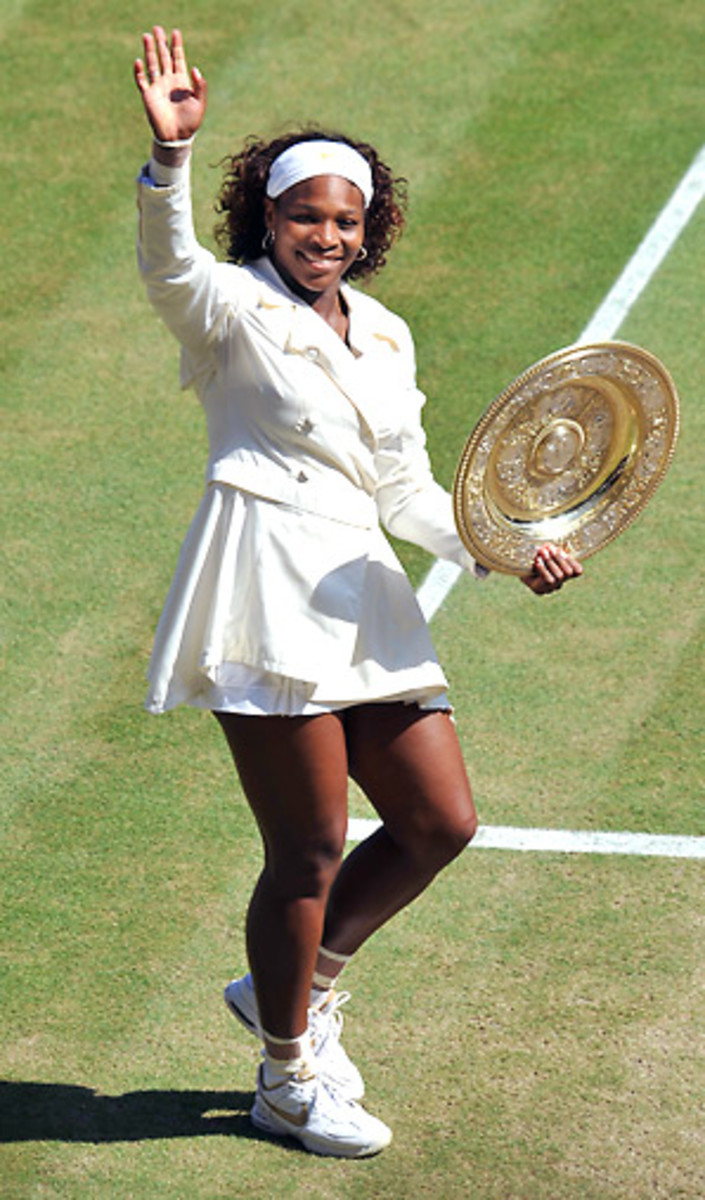What We Learned: Serena-Venus
1. Serena Williams is the world's real No. 1. Less than 48 hours after top-ranked Dinara Safina collapsed like a three-legged chair against her sister, Venus, the younger Williams proved to have the steadiest game on grass. Able to hold serve throughout and paint the baselines with winners, Serena collected her third Grand Slam championship in the last year, adding to the U.S. Open and Australian trophies she already carries in tow. If the epic comeback win over Elena Dementieva in the semifinal showed that Serena has a Secretariat-sized heart, then the final reinforced the idea that she has an assassin's detachment to close out a title. Both parts add up to her being the only woman in the No. 1 position.
2. Venus started slipping early. The five-time Wimbledon champion walked onto Centre Court with a 34-set win streak on the London grass, but her favorite surface failed her Saturday. Each misstep was tantamount to a championship belt holder falling to the canvas, especially when Serena seized the slippage in the first-set tiebreaker to take what became an insurmountable 4-2 lead. No excuses were offered regarding the two bandages wrapped around Venus' left knee, as she deflected questions throughout the fortnight. Her footing was lost three times Saturday, the final descent giving her London suite-mate championship point and herself a sinking feeling.
3. Nice of NBC to serve Breakfast at Wimbledon on time. The Peacock Network ruffled tennis fans' feathers with tape-delayed matches during the semifinals, but no contract or rights holdups precluded them from broadcasting live. In 1979, the men's title match between Bjorn Borg and Roscoe Tanner was the first Wimbledon final to air live; but 30 years later, NBC stands firm on its decision to run lead-up matches on tape delay instead of pre-empting its Today Show. While fans have the options of watching slow-moving international telecasts via the internet or listening to Radio Wimbledon on the event's official Web site, NBC continues to show it's behind the times on Slam broadcasts.
4. The best moment? Let's go with Venus' adjustment to a net cord in the first set, and Serena's subsequent return that lofted the ball back over her sister's head and out of reach for the winner after 18 strokes were exchanged. The deftness was remarkably reminiscent of Roger Federer's equally impressive lob over Tommy Haas' head in the men's semifinal. While Serena's service game (94 percent on first serves) was striking for its consistency, Venus fought off attack as long as she could with her own strokes. It was the ability to go soft without ceding ground that made Serena's play stellar.





